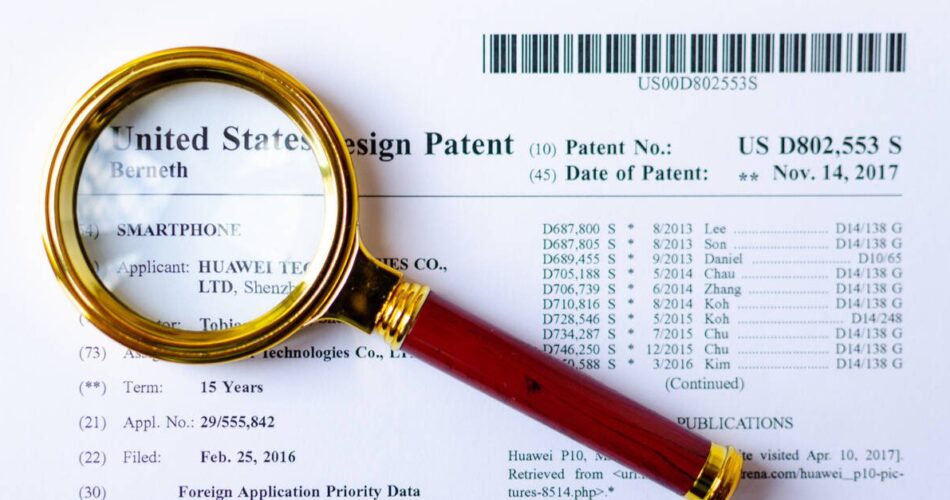Microsoft last month received a US patent covering modifications to a data-encoding technique called rANS, one of several variants in the Asymmetric Numeral System (ANS) family that support data compression schemes used by leading technology companies and open source projects.
The creator of ANS, Jarosław Duda, assistant professor at Institute of Computer Science at Jagiellonian University in Poland, has been trying for years to keep ANS patent-free and available for public use. Back in 2018, Duda’s lobbying helped convince Google to abandon its ANS-related patent claim in the US and Europe. And he raised the alarm last year when he learned Microsoft had applied for an rANS (range asymmetric number system) patent.
Now that Microsoft’s patent application has been granted, he fears the utility of ANS will be diminished, as software developers try to steer clear of a potential infringement claim.
“I don’t know what to do with it – [Microsoft’s patent] looks like just the description of the standard algorithm,” he told The Register in an email. The algorithm is used in JPEG XL and CRAM, as well as open source projects run by Facebook (Meta), Nvidia, and others.
The Register asked Microsoft whether it intends to seek royalties for its patent but the company has not responded.
“This rANS variant is [for example] used in JPEG XL, which is practically finished (frozen bitstream) and [is] gaining support,” Duda told The Register last year. “It provides ~3x better compression than JPEG at similar computational cost, compatibility with JPEG, progressive decoding, missing features like HDR, alpha, lossless, animations.
“There is a large team, mostly from Google, behind it. After nearly 30 years, it should finally replace the 1992 JPEG for photos and images, starting with Chrome, Android.”
But now, he said, Microsoft’s patent could make JPEG XL adoption more difficult.
The tangled web of patents
Others don’t consider the situation to be that dire. Jon Sneyers, senior image researcher at Cloudinary and editor of the JPEG XL spec, told The Register in an email message, “As far as I know, this patent doesn’t affect JPEG XL. At least Microsoft has not declared to ISO that it does, even though they have had plenty of time to do so if they thought it did, and Microsoft is participating in JPEG so they are aware of the technology used in JPEG XL. But of course I am not a lawyer.”
In a phone interview, Timothy Lee, a reporter for Full Stack Economics who covered Google’s attempt to secure an ANS-based patent three years ago, said that the proliferation of patent applications related to ANS illustrates the problem with the way software patents work.
“Companies try to make minor improvements on technologies and then patent those,” he explained. “Then you end up with a patent thicket where there are only so many to implement, and if all of those ways are patented, it becomes difficult to figure out a way around it.”
Another problem, he said, is that there’s no standard terminology for software patents. Unlike drug patents, where chemical formulas can be specified, software patents may describe the same thing in different ways.
“It becomes quite a minefield when you are an open source developer who doesn’t have the time or resources to hire a patent lawyer,” he said.
Bradley Kuhn, policy fellow at Software Freedom Conservancy, told The Register in an email that the SFC opposes the patenting of software algorithms completely.
“We think it’s risible that any company, and in particular Microsoft, can claim on one hand to support Free and Open Source Software (FOSS) and on the other hand continue to build their giant patent portfolios that will ultimately have chilling effects on FOSS innovation,” said Kuhn.
“Microsoft has a long history of patent aggression against FOSS; it was not too long ago that they were shaking down Linux users and Android distributors over patents, and we would expect more shakedowns to come on this and other patents.”
Kuhn said attempts to extract patent rent tend to happen behind closed doors, to pressure smaller companies into an “acqui-hire” deal or secure huge licensing payments. The SFC, he said, would gladly work with any company to develop a clear, permanently binding FOSS-friendly patent license.
“What we have regarding software patents is a patchwork of inadequate ‘patent promises’ and other incomplete solutions,” said Kuhn. “For example, despite Microsoft being a member and licensee in the Open Invention Network (OIN, a for-profit industry-controlled consortium), our initial analysis shows that OIN protection will not meaningfully extend to FOSS uses that could infringe this patent.
“Similarly, standards bodies have a very poor track record in protecting FOSS from patent problems. These situations show the real downsides of allowing Big Tech to police themselves on their bad patent policies.” ®
Source link



